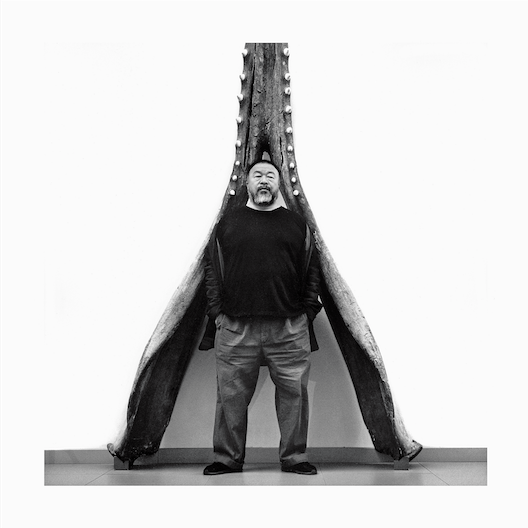Starting in September at the Musée Cantonal des Beaux-Arts de Lausanne, Chinese artist Ai Weiwei is taking over the whole of the Palais de Rumine with more than 30 often monumental works.
Recent and monumental pieces : Ai Weiwei, one of the most significant and influential artists of the last decade, is back in Switzerland. After his very first European solo show at the Bern Kunsthalle in 2004, the Chinese artist has once again accepted an invitation from Bernard Fibicher, director of the Musée Cantonal des Beaux-Arts de Lausanne (mcb-a). For this exhibition – the last at mcb-a on its present site, before the move to PLATFORME 10 – Ai Weiwei is throwing a party, with works spilling out of the exhibition rooms into the Palais de Rumine’s public spaces and the museums of archaeology and history, zoology, geology and numismatics.
From 22 September 2017 to 28 January 2018, the exhibition Ai Weiwei: It’s Always the Others will bring together more than 30 works dating from 1995 to the present in the majestic rooms of the Musée Cantonal des Beaux-Arts – as well as in all the Palais de Rumine’s other museums. The Zoology Museum, for example, will be hosting a dragon 50 metres long, suspended over visitors’ heads. Monumental in scale but subtle in its use of silk and bamboo, this installation has only been shown once before, in the New Industries Building, a disused warehouse that once served as a workshop for prisoners in Alcatraz. The traditional symbol of Chinese imperial power, the dragon as appropriated by Ai Weiwei becomes a sign of personal freedom. The individual kites making up its body carry quotes from imprisoned or forcibly exiled political activists including Nelson Mandela, Edward Snowden – and Ai Weiwei.
Works in porcelain, wood, aluminium, marble, jade, glass, bamboo and silk, together with wallpaper, photographs, videos and a film, testify to the rich variety of Ai Weiwei’s oeuvre and his profound knowledge of his country’s cultural tradition. At the same time, however – and here we detect a spirit akin to that of Marcel Duchamp – in a playful or iconoclastic way he rechannels his traditional motifs, methods and materials into a critique, overt or covert, of the Chinese political system. His most recent works bear on the troubling complexity of international issues including economic dependency and refugee flows. This exhibition at the Musée Cantonal des Beaux-Arts de Lausanne hails a true all-rounder: a remarkable visual artist, an encyclopaedic mind, a gifted transmitter of ideas and a man coming to grips with the world’s major problems. Ai Weiwei may well be the first truly “global” artist.
One of the show’s most spectacular works is the vast field of handpainted porcelain sunflower seeds that provide its Sunflower Seeds title. Ai Weiwei had 100 million of them made – 150 tonnes – by 1600 men and women workers in the factories of Jingdezhen in China, and 10 tonnes will be spread over mcb-a’s biggest room. China’s favourite nibble during the Cultural Revolution, sunflower seeds had a universally obvious symbolic value: like sunflower plants, the citizens of the People’s Republic of China were turning their heads towards their sun, Mao Zedong. The ironic implications of this installation lie in the way it was made, at the opposite pole from “Made in China” mass production: each seed is hand-painted and thus unique, and the political message is unambiguous.






